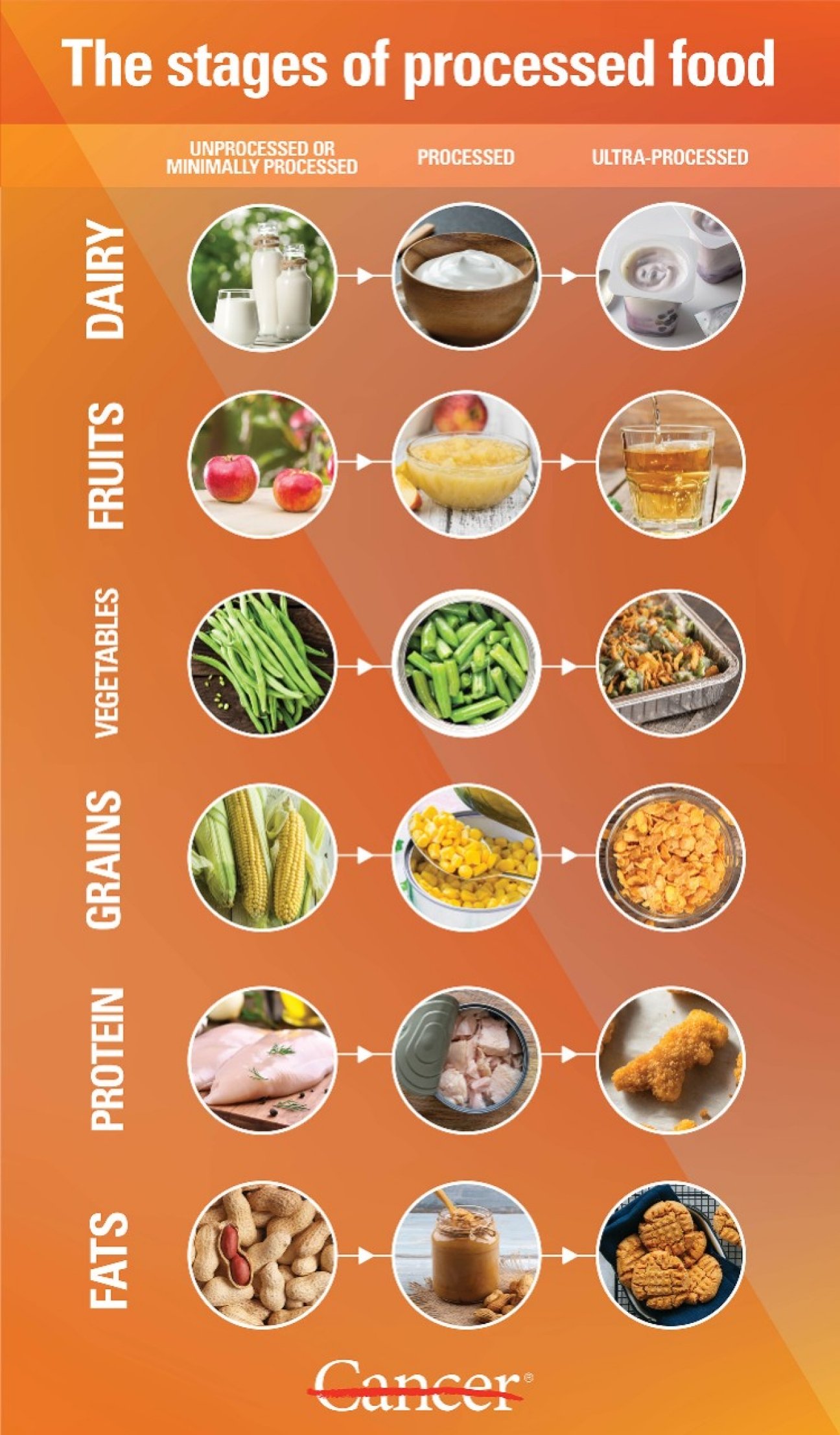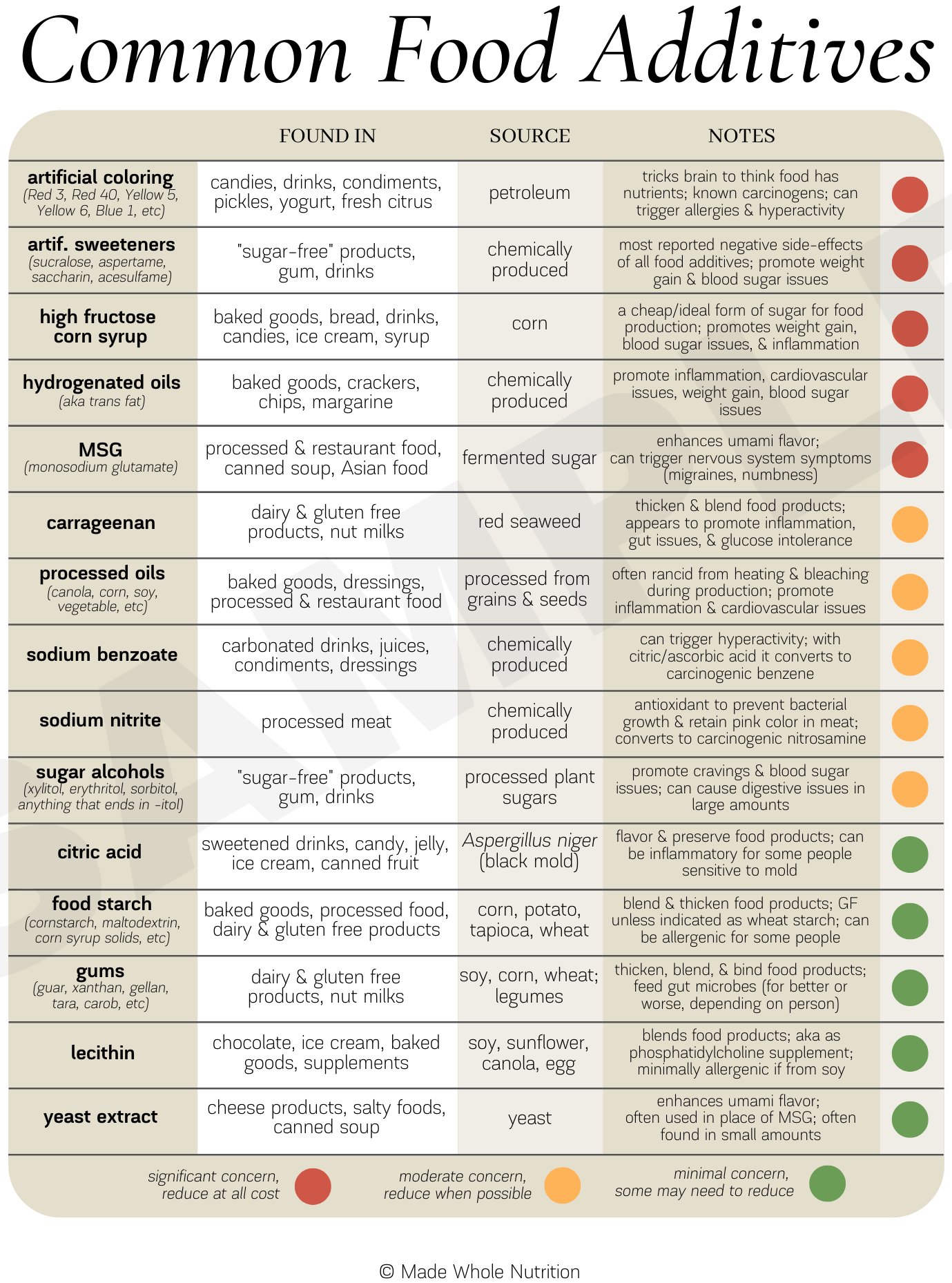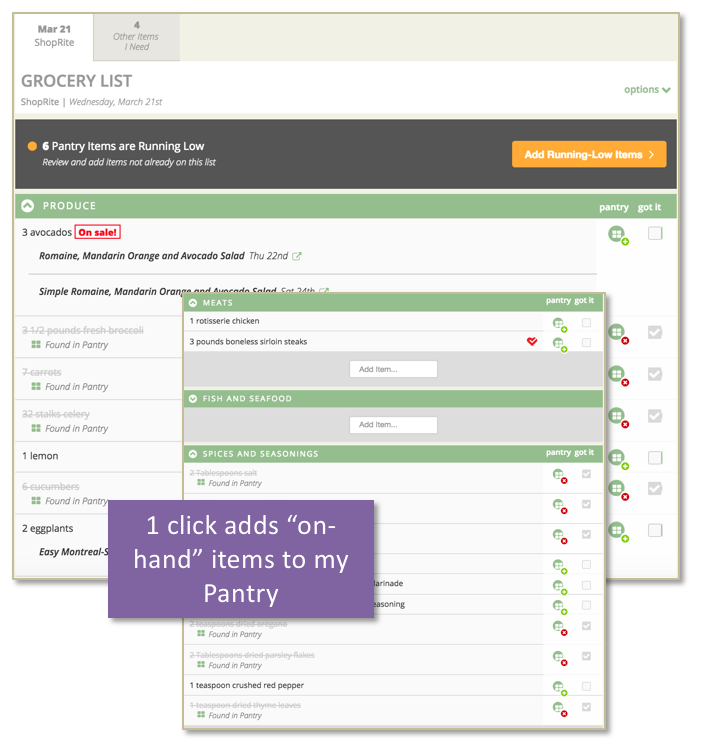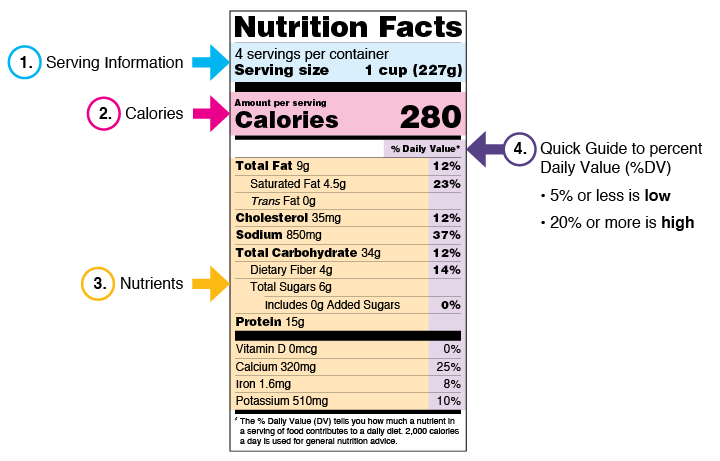
I just want the truth. Sometimes I wonder if I’m getting accurate info about a food being healthy or falling for slick marketing. It’s mind boggling and I just want some answers! The reality is, it’s up to me to do a little investigation. Even when we rely on trusted sources, they may not have the best answers.
Recently the FDA changed their guidelines for which foods can be labeled as “healthy.” This is a 300 page guideline that very few will read! It’s the first update in three decades laying out what the FDA does and doesn’t consider healthy. As part of their role, the FDA promotes nutritious eating patterns by providing information so that consumers can make healthier food choices.
 For a product or food to be marketed as “healthy” the FDA has criteria that must be met. It must contain a certain amount of food from at least one recommended food group (like fruits, vegetables, whole grains, protein) and meet specific limits on saturated fat, sodium, and added sugars. For example, as you can see on the partial chart above, the FDA requires at least a specific portion of a food and limits added sugars, sodium and fats. For the full chart click here.
For a product or food to be marketed as “healthy” the FDA has criteria that must be met. It must contain a certain amount of food from at least one recommended food group (like fruits, vegetables, whole grains, protein) and meet specific limits on saturated fat, sodium, and added sugars. For example, as you can see on the partial chart above, the FDA requires at least a specific portion of a food and limits added sugars, sodium and fats. For the full chart click here.
In this most recent iteration of what is considered healthy, is an adjustment of healthy vs non-healthy fats. Previously, nuts were not considered healthy because they exceeded the amount of fat considered healthy. But with the understanding of the health benefits between saturated (unhealthy) and unsaturated (healthy) fats, items such as olive oil, nuts, seeds, higher-in-fat fish such as salmon and some peanut butters have been added to the list as “healthy.”
The easiest way to ensure you are feeding your family foods without artificial additives or added sugar is to chose whole foods. Whole foods are those foods that come from their original source and are minimally processed. For example, choose potatoes from the produce area rather than a box of mashed potato flakes. Sliced chicken and turkey breast are a better choice than deli meats that have been processed with salt and sugar.
 This sounds pretty clear cut to me, but the reality is, companies are always looking for ways to add flavor, appearance or ease of preparation to various products… and market it as a positive. For example, in the 1990’s, a major potato chip maker introduced a chip that was low-fat. Oh my goodness, the excitement over the idea that we could consume our chips guilt-free. In fact, the ingredient that was used to make them was approved by the FDA as a calorie-free fat substitute, so this miracle ingredient wasn’t going to add any extra calories or fat, and in fact, the chips were half the calories of a regular chip. Amazing right? Nope. The ingredient was Olestra, a fat substitute that can not be absorbed or digested, resulting in all sorts of unpleasant gastric issues. Ironically, the FDA did require warnings on products containing Olestra, but that wasn’t what the marketing of those chips highlighted. Consumers were told these chips were good for them because they were low-fat. Those chips are no longer on the market! The lesson here being to make sure to read the packaging more closely and beware of the hype of marketing. Want to know something alarming? While those chips are no longer for sale, other products that do contain Olestra no longer are required to have a warning label on them because it was felt the label could be misled that Olestra was the only reason someone could have an adverse reaction to the product. That’s a little scary.
This sounds pretty clear cut to me, but the reality is, companies are always looking for ways to add flavor, appearance or ease of preparation to various products… and market it as a positive. For example, in the 1990’s, a major potato chip maker introduced a chip that was low-fat. Oh my goodness, the excitement over the idea that we could consume our chips guilt-free. In fact, the ingredient that was used to make them was approved by the FDA as a calorie-free fat substitute, so this miracle ingredient wasn’t going to add any extra calories or fat, and in fact, the chips were half the calories of a regular chip. Amazing right? Nope. The ingredient was Olestra, a fat substitute that can not be absorbed or digested, resulting in all sorts of unpleasant gastric issues. Ironically, the FDA did require warnings on products containing Olestra, but that wasn’t what the marketing of those chips highlighted. Consumers were told these chips were good for them because they were low-fat. Those chips are no longer on the market! The lesson here being to make sure to read the packaging more closely and beware of the hype of marketing. Want to know something alarming? While those chips are no longer for sale, other products that do contain Olestra no longer are required to have a warning label on them because it was felt the label could be misled that Olestra was the only reason someone could have an adverse reaction to the product. That’s a little scary.
 I don’t love reading labels, but I do it. Studies show that 80% of Americans do read food labels, but 57% don’t really understand them. In truth, I tend to only look at a few features of the label like if there are any added sugars, the number of calories and the amount of sodium. At one point, I was reading the entire ingredient list…which alarmed me! So many big words like monosodium glutamate or ambiguous phrases like “natural flavors.” I’ve educated myself on the most common added ingredients and some others I still have to look up. With a glance, I know I don’t want to ingest or feed my family foods with artificial colors or flavors. I especially don’t want anything with added fructose corn syrup! Like understanding that the Olestra in snack products won’t be good for you, it’s important to not get caught up in the hype of product and do our own investigation.
I don’t love reading labels, but I do it. Studies show that 80% of Americans do read food labels, but 57% don’t really understand them. In truth, I tend to only look at a few features of the label like if there are any added sugars, the number of calories and the amount of sodium. At one point, I was reading the entire ingredient list…which alarmed me! So many big words like monosodium glutamate or ambiguous phrases like “natural flavors.” I’ve educated myself on the most common added ingredients and some others I still have to look up. With a glance, I know I don’t want to ingest or feed my family foods with artificial colors or flavors. I especially don’t want anything with added fructose corn syrup! Like understanding that the Olestra in snack products won’t be good for you, it’s important to not get caught up in the hype of product and do our own investigation.
I’m far from the perfect clean-eating healthy person. Don’t let it out, but I love a couple of Oreo cookies dipped in a glass of milk as much as the next person. (I don’t look at that label because I need to believe my favorite cookies are made from magic! Ha Ha!) I don’t let myself feel guilty because I’ve made so many other healthy choices.
My family tends to eat whole foods but I’m also a believer in doing what works for your household…maybe with some tweaking. Make one more meal at home a week. Prep veggies and plan out meals for the week over the weekend and read more labels. If you’re buying jarred pasta sauce (and who doesn’t!!) make sure it’s the brand with the least added sugar. Some things are made to save me time like taco seasoning. I can make it from scratch but I probably won’t, so if I want to serve tacos, I’m ok with a premade mix. On the flip side, I rarely buy frozen foods like lasagna that have loads of extra sugars and other weird ingredients. I can make lasagna pretty easily (great weekend task) and I know that I only used the ingredients approved by me! Identify what really works for your family make your own rules and put them into practice.
Rules to Live By:
 Planning: If I haven’t planned what we will be having for our meals, we end up eating something pre-made or ordering out. Both of these options tend to come with added sugars, high saturated fats and high salt content. Using the DinnerTime Planner helps me keep my nutrition goals in line as well as my budget.
Planning: If I haven’t planned what we will be having for our meals, we end up eating something pre-made or ordering out. Both of these options tend to come with added sugars, high saturated fats and high salt content. Using the DinnerTime Planner helps me keep my nutrition goals in line as well as my budget.
Shopping: Never shop without a thought-out list. Impulse buying is expensive! I appreciate how easy it is for me to edit my DinnerTime Grocery List with anything else we might need for the week such as bananas and milk. My list is easy to follow and I find I don’t go down the chip or cookie aisles because they are not on my list! The majority of grocery cart is whole foods.
Prep: The cost of groceries is crazy these days and so I try to make as much from scratch as possible. Sure it would be great to buy the already marinated pork loin but I can take five minutes to do that myself and save money and reduce the added salt and sugar. Sometimes my hubby and I are so tired we don’t “feel” like cooking, but If i’ve pre-cut peppers and onions and prepped the beef for fajitas, it’s just as easy to toss it in the pan than it is to order out.
Advantage Sales: Fortunately my DinnerTime Planner will recommend on-sale ingredients when planning our meals. Additionally, if I know certain ingredients like chicken or bags of frozen broccoli are on sale, then I’ll stock up. These items never go to waste in our home because I enter them in my DinnerTime Pantry Manager and it will utilize them in future meal recommendations.
 Read the Label: Read both the nutrient label and the ingredient label. Educate yourself. I read the nutrient label first. If the sugars/carbs are high or the sodium is high, I look down at the ingredient list to see what has been added to the product to push those numbers. Also, note the serving size. If a serving is one quarter of a brownie, will you really be able to only eat a quarter of a brownie? (Not me!) If you can’t understand what a particular…or more than one ingredient is, then maybe put it back on the shelf. There are so many “clean” options of ingredients that haven’t been altered. For example when purchasing canned fruit, look for the kind with the fruit stored in water instead of syrup, which adds sugar unnecessarily.
Read the Label: Read both the nutrient label and the ingredient label. Educate yourself. I read the nutrient label first. If the sugars/carbs are high or the sodium is high, I look down at the ingredient list to see what has been added to the product to push those numbers. Also, note the serving size. If a serving is one quarter of a brownie, will you really be able to only eat a quarter of a brownie? (Not me!) If you can’t understand what a particular…or more than one ingredient is, then maybe put it back on the shelf. There are so many “clean” options of ingredients that haven’t been altered. For example when purchasing canned fruit, look for the kind with the fruit stored in water instead of syrup, which adds sugar unnecessarily.
Buy Whole Foods/Avoid The Box: This means unadulterated foods. Not everything in a box is going to have added ingredients that I don’t want, but let’s be real, most do. There are some things I don’t make from scratch such as pasta or crackers, but I can read the labels and pick the ones with the least amount of added ingredients. I would rather marinate or season my proteins myself, and my DinnerTime Recipes take me step by step through that easy process. Remember that eating a bag of chips will fill you up for a little while, but quickly, you will become hungry again. That bag of chips was pricey, so now you will have to spend more to not feel hungry.
Did you know that the FDA recently banned Red Dye #3? This synthetic, petroleum based, dye is found in many food products, such as candy, cakes and cupcakes, cookies, frozen desserts, and frostings and icings, as well as certain ingested drugs. Red Dye #3 gives foods and drinks a bright, cherry-red color. This particular dye has been shown to cause cancer in male mice raising the concern for human consumption. Manufacturers have until 2027 to remove Red Dye #3 from their products. There are many synthetic flavorings and dyes in products found on our grocery shelves, and we hope the FDA continues to evaluate their risk-benefit as an additive to foods.
